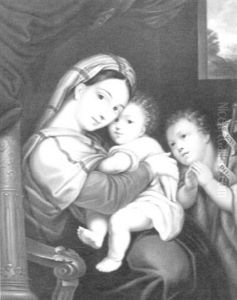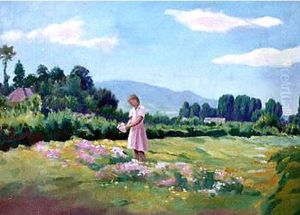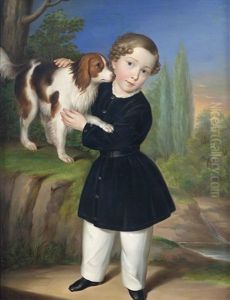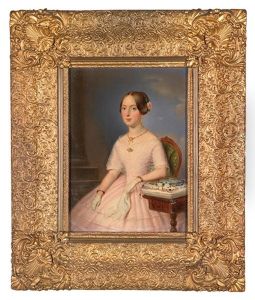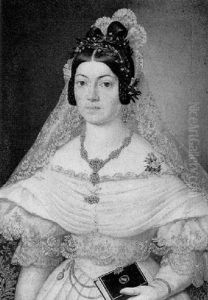Johann Andreas Gebhardt Paintings
Johann Andreas Gebhardt was a German artist known for his work as a sculptor during the Baroque period. Born in 1686 in the Holy Roman Empire, Gebhardt developed his artistic skills in an era that was characterized by dramatic expression and grandeur in the visual arts, architecture, literature, dance, and music. The Baroque style that dominated European art from the early 17th century until the mid-18th century was pivotal in the development of later artistic movements, and artists like Gebhardt contributed to its evolution with their work.
Gebhardt was primarily active in Germany, where he spent much of his life. His sculptures often featured religious themes, which was typical for the period, as the Catholic Church was a major patron of the arts. His works would have been found in churches, on altars, and as part of religious processions, reflecting the deep intertwining of art and faith during the Baroque era. Additionally, given the historical context of his life, it is likely that his works also included commissions for the nobility and the growing bourgeoisie, who were keen to emulate the grandeur of the church and the aristocracy.
Unfortunately, specific details about Gebhardt's life and works are not well-documented, and his legacy is not as prominent as that of some of his contemporaries. This scarcity of information can be attributed to a variety of factors, including the passage of time and the possible destruction or loss of many of his works. However, the fact that he is recognized as a sculptor of the Baroque period suggests that he did achieve a level of skill and recognition in his time.
Johann Andreas Gebhardt passed away in 1756. While his individual contributions to the art world might not be widely celebrated or extensively chronicled, his role in the broader tapestry of Baroque art is part of the rich history of European artistic endeavors. Sculptors of the Baroque period like Gebhardt helped to convey the power, emotion, and dynamic movement that defined the artistic sensibilities of their time.
